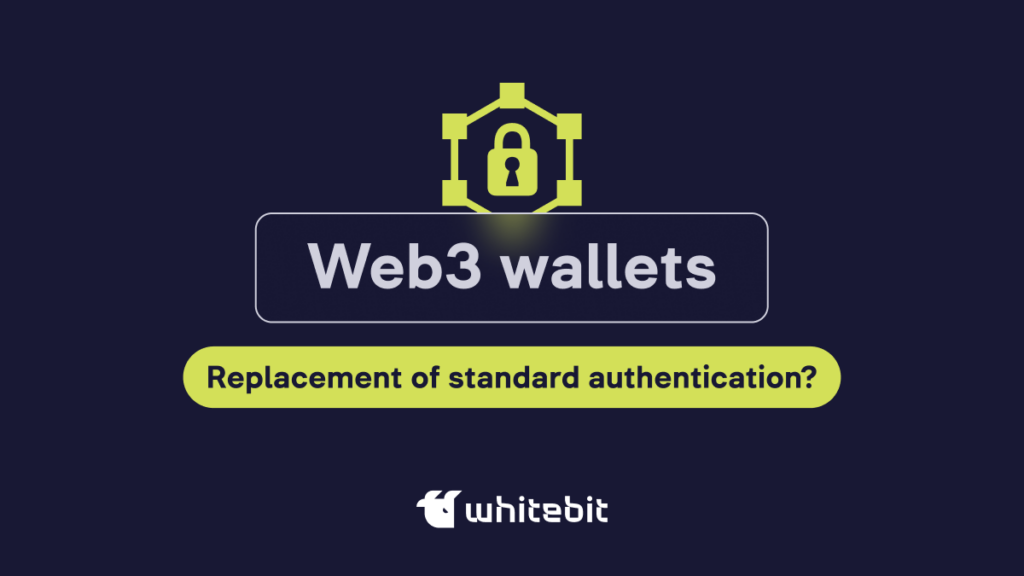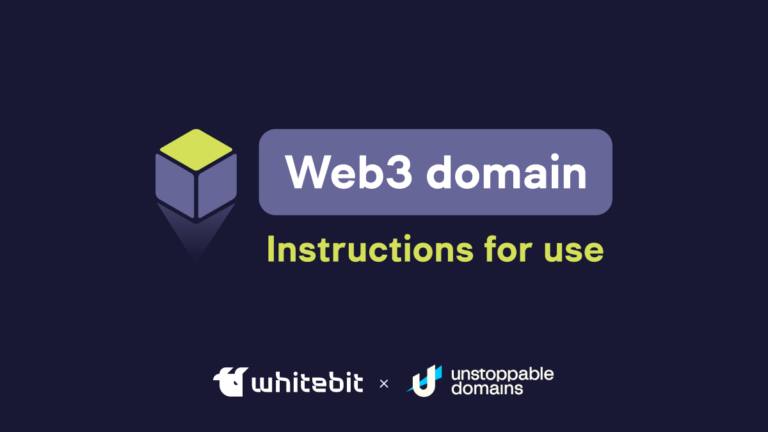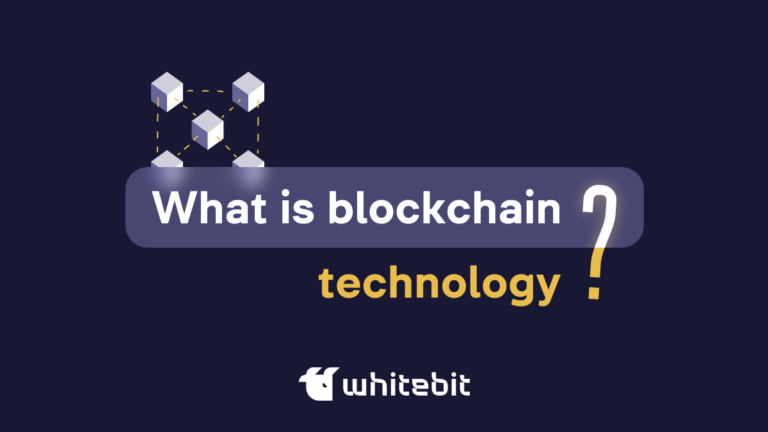Exploring Web3 Authentication in Blockchain Applications

Content
In recent years, blockchain technologies have become more widespread and popular, offering a decentralized and secure way to store and transfer information. One of the key aspects of blockchain is the need for secure authorization to ensure that only authorized individuals can access and interact with data.
Traditional authorization methods like logins and passwords cannot secure access to decentralized applications (dapps). This led to the fact that now crypto wallets are the only secure and convenient authorization method in blockchain applications and protocols.
Web3, also known as the decentralized network or blockchain network, is the next stage of Internet development, which allows the use of blockchain, decentralized applications, finance, and smart contracts. Some of the key features of Web3 include:
- Decentralization: Web3 is decentralized, meaning no single organization controls it. Instead, a network of nodes manages it and works together to validate transactions and maintain the integrity of the network.
- Blockchain: Web3 is based on the blockchain, which enables secure and transparent transactions without intermediaries.
- Smart Contracts: In Web3, you can create smart contracts where the terms of an agreement between parties are written directly into lines of code. Smart contracts are immutable, transparent, and enforceable, making them a great tool for building decentralized applications and finance (DeFi).
- Cryptography: Web3 uses cryptography to protect transactions and user privacy. Cryptography is used to encrypt data, create digital signatures, and verify transactions.
- Compatibility: Web3 provides interoperability between blockchains and networks, allowing anyone to create cross-platform apps.
- Tokenization: Web3 allows creating and managing tokens representing any asset, such as currency, property, or even works of art. Tokens can be bought and sold on various decentralized exchanges (DEXs), as well as earned through various decentralized protocols and apps.
- Governance: Web3 offers a new governance model that is more transparent and democratic. Decisions about network development and the new features implementation are made through a consensus mechanism that gives all parties a vote in the decision-making process.
Limitations of traditional authorization methods and how Web3 wallet solves them
While conventional login methods have become more sophisticated over the years, they still have problems. Some of them are:
- Password-based authentication systems are vulnerable to various attacks, such as password guessing, brute force attacks, and phishing. This may lead to unauthorized access to confidential information. In addition, remembering numerous complex passwords significantly deteriorates the user experience.
- Two-factor authentication (2FA) provides an extra layer of security, but even it is vulnerable. For example, if an attacker gains access to a user’s phone, they can bypass 2FA by intercepting an SMS or a call.
- Biometric authentication. Facial recognition and fingerprint scanning are also popular authorization methods. The problem is that biometric data can be stolen, and once stolen, it cannot be replaced. In addition, there is a risk of false positive and false negative scans, which can lead to authentication failures.
- Centralized Authentication (SSO). Like with Google and Facebook login, when one service is hacked, third parties will have access to all the profiles associated with this authorization method.
- The personal data of users on most modern services is controlled and secretly transferred to third parties.
- Lack of standardization: Authentication systems are often proprietary and not standardized. This makes it harder to manage your identification across systems and services.
Web3 wallets offer a secure and convenient way to log in to blockchain applications. What is a web3 wallet? It is a physical or digital device used to store private keys needed to access digital assets stored on a blockchain.
Web3 wallets use public and private key encryption to authenticate users, eliminating the need for passwords. This method makes it harder to gain access to accounts because hackers need access to the private key.
For example, the MetaMask wallet, one of the most popular Web3 wallets, uses a seed phrase to generate a private key. A seed phrase is a set of words used to create a private key.
Benefits and drawbacks of Web3 auth for authorization in blockchain applications
Web3 authorization provides the following benefits:
- Secure Authentication: Signing transactions provides strong protection against unauthorized access, hacking, and phishing attacks.
- Decentralized access control: With Web3 wallets, users can grant or revoke access to their data and assets on a decentralized basis without relying on centralized servers or third-party authentication services. This ensures complete control over data, maintaining confidentiality and security.
- A better user experience by facilitating authorization and eliminating the need to remember complex password combinations. Also, users can manage their data and assets in decentralized applications and networks from a single interface.
- Cross-platform operation.
- Improved transparency and the ability to audit transactions and actions on the blockchain. This allows users to verify the integrity of the network and ensures that all parties are accountable for their own operations.
But there are also disadvantages to using decentralized wallets for authorization.
- Responsibility of the user due to complete control over their data and assets. If you lose private keys or carelessly interact with the blockchain, you can permanently lose access to your data and assets.
- Limited use of crypto wallets: Despite the fact that they are becoming more and more widespread, they are still used by a relatively small number of people compared to traditional wallets and authentication methods. Subsequently, this may limit the growth of the Web3 ecosystem.
- Interoperability issues: Not all Web3 wallets are interoperable with all blockchains and decentralized apps.
- Regulation problems. Web3 wallets and the dapps they support are still in the gray area of regulation in many jurisdictions.
Real-world examples of Web3 wallet authorization
Web3 wallets have already become widespread in the blockchain industry. MetaMask, for example, has over 30 million monthly active users and is integrated with several blockchain applications such as Uniswap, OpenSea, and Aave.
Another example is the Argent Wallet, which uses a smart contract approach for secure authorization. The Argent smart contract allows users to set up various security measures, such as multifactor authentication, to secure their accounts. This approach provides an additional layer of protection for users.
Web3 auth is also available on WhiteBIT. You can log in using MetaMask, Coinbase Wallet, and Trust Wallet. It is safe, convenient, and much easier than constantly entering a username and password.
Web3 authentication on WhiteBIT
The future of Web3 authorization: A new era of secure authorization in blockchain applications
Web3 wallets are in the early stages of adoption, but they can potentially change how we log in to blockchain-based applications. As blockchain technology continues to gain momentum, more and more users are expected to use crypto wallets as a secure and convenient authentication method.
In addition, the development of decentralized identity systems can make them even more protected and user-friendly. Decentralized identity systems will allow users to manage their identification and authentication across various blockchain applications, further enhancing the compatibility and comfort of Web3 wallets.
Let’s not forget that Web3 is the next most likely stage in the development of the Internet, where the influence and control of large corporations will no longer determine the ability to access data and will not manage it. And access to the decentralized Internet will be carried out with the help of crypto wallets. In the meantime, you can already log in using this method on our exchange.
Today, Web3 authentication offers a more secure and convenient way to log in to blockchain applications than traditional forms of authorization. Despite some disadvantages of using crypto wallets, the advantages are obvious. They are the backbone of the cryptocurrency industry. As the blockchain industry continues to evolve, Web3 wallets could become even more convenient, accessible, and secure, paving the way for a new era of secure authorization in blockchain apps and possibly the future of the distributed Internet.








